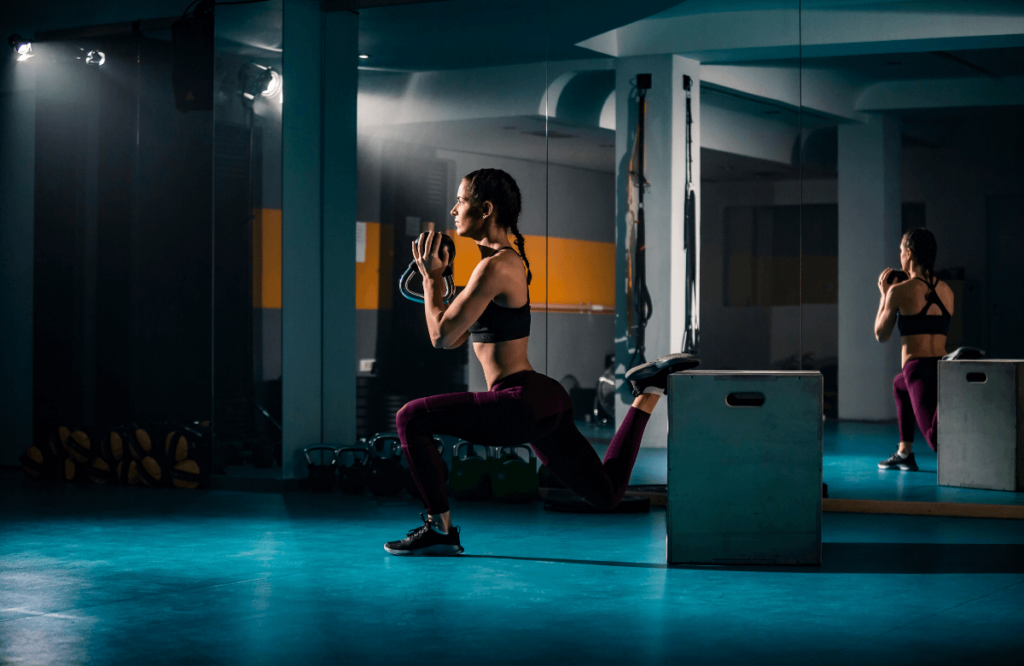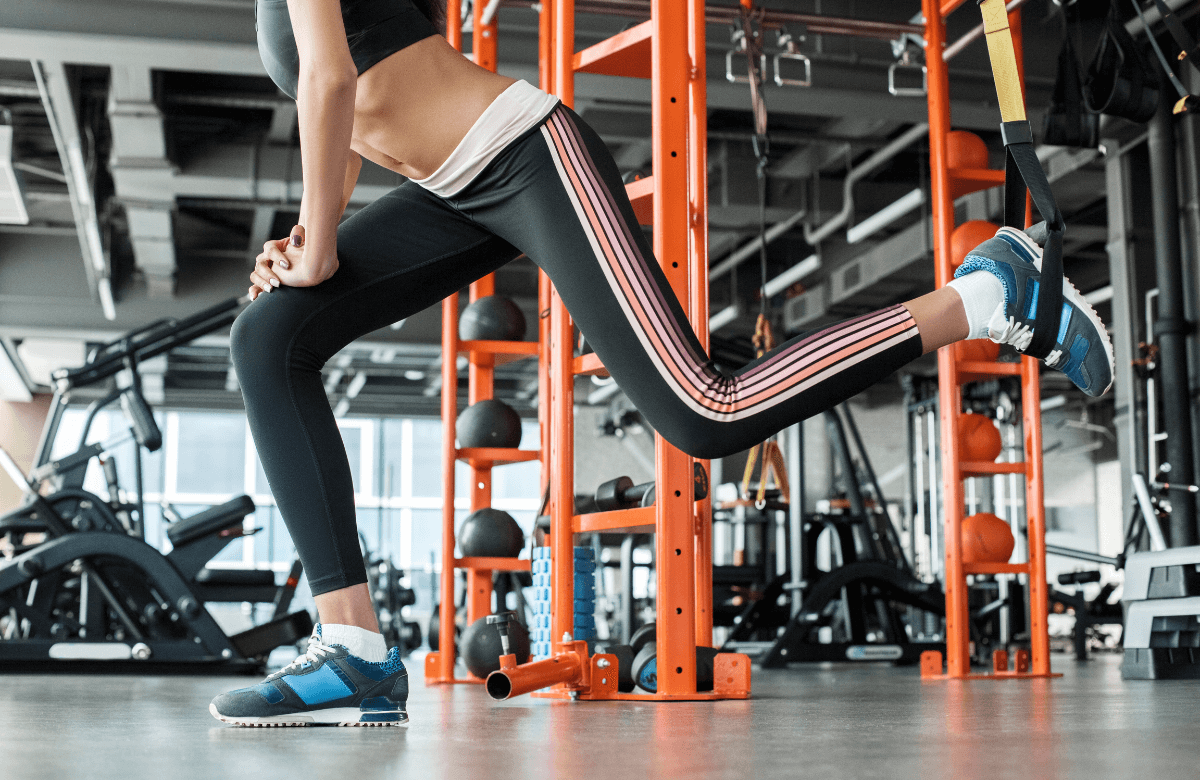Whether you like squats or not, many people tend to suffer when it comes to trying to find new exercises for their leg day workout. Lucky for you, we’re here to help! You’ve probably heard of the regular split squat, but what about the Bulgarian Split Squat? It’s a semi-easy, fun-to-learn, lower-body exercise that’s guaranteed to bring results, especially once you add a pair of dumbbells to the exercise You might especially like bulgarian split squats for glutes training. Let’s dive in!
Jump to:
First Off, What Is The Bulgarian Split Squat?
The Bulgarian Split Squat is a fantastic squat variation where one leg is on an elevated surface while the other leg is performing the squat. This single-leg unilateral exercise targets the leg muscles in such a specific way unlike any other leg exercise and is recommended for intermediate to advanced-level athletes who have control and well-rounded body awareness.
Bulgarian Split Squat vs. Lunge
Unlike a typical lunge, the Bulgarian Split Squat is much easier on the back. So, if you suffer from back pain (or even if you don’t) it’s still a great exercise to have in your regime. The Bulgarian Split Squat also allows a greater reach of depth which can assist with the flexibility of your hip flexors and increase your range of motion.
Bulgarian Split Squats: Muscles Worked
The Bulgarian Split Squat is a lower body, compound exercise that mainly targets the major muscles like the hamstrings, gluteal muscles, quadriceps, abductor muscles, and calf muscles. It also puts a lot of focus on the abdominal muscles and spinal erectors.
GIF SQUAT BULGARE
Benefits Of Doing Bulgarian Split Squats for Glutes & More
We could talk about this exercises’s benefits all day, but here are the absolute best ones you should know about:
Target’s more than glutes
Since this is a single-leg exercise, you are forced to use your core in overdrive to maintain your balance. It targets a lot of those stabilizing muscles like your quads and calves as well.
Easy to learn
Bulgarian Split Squats are an incredibly easy lower-body exercise to learn and don’t require much or any special equipment at all. If you don’t have access to a bench then a chair or a secure ladder or even just a raised platform can work. Once you get all the equipment then completing the exercise is even easier since, in the grand scheme of things, you’re just doing a slightly more advanced lunge.
Builds strength and increases balance
The biggest benefit is that this squat variation is a great one for muscle growth, increasing your range of movement, and can help your balance improve exponentially. With the correct form, you can add on heavy weights for better core and glute activation. Compared to regular lunges, doing this type of Bulgarian squat is so much better at building strength.

How To Do A Bulgarian Split Squat
Start by standing about two feet in front of a sturdy bench or chair with your feet hip-distance apart. Keeping your core muscles engaged, your shoulders back and your chest and eyes pointing ahead, pick up your right foot and place it on the bench behind you. Now, there are two separate ways to do this. The first one is to flex your ankle and find your balance with the ball of your foot and your toes. The second option is to place the top of your rear foot flat on the bench so that your ankle joint is roughly aligned with the edge of the bench.
Make sure to slightly bend your left knee and allow your right rear knee and ankle to naturally bend as your move during the exercise. It’s also very important to keep the mass of your weight balanced evenly across your left foot as you squat downwards.
Continue the squat by inhaling as you descend and exhale as you return to the starting position while using your left quad and glute to power the upward phase of the exercise.
Bulgarian Split Squat Form
So we explained how to do a Bulgarian Split Squat, but many people don’t know that you can actually target specific parts of your legs depending on how you position your body for the squat and hold your weights (if any).
For Targeting The Quadriceps
By standing closer to the elevated surface it will put more of an emphasis on your quads. Although this one can get a bit tricky as it’ll require more balance and can hurt your knees if done improperly.
For Targeting The Core Muscles
If you’re looking to target your abs, try holding weights above your chest level to increase the strain on your abdominals.
Mistakes To Avoid
The first thing to avoid when doing the Bulgarian Split Squat is lifting the front heel. It’s very important to make sure your front foot is flat on the floor and your heel stays grounded throughout the exercise as it can cause more balance issues and hurt your leg muscles.
The next one is driving through the back leg. This exercise should target your front leg with the back leg only there to offer support. It’s also a good thing to remember to lift the majority of your weight with the front leg to avoid injury.
Another mistake to avoid is tipping forward. The proper form is to keep the angle of your upper body upright throughout the movement. If you’re tipping forward you might have to adjust your leg positioning or reduce the weight you’re trying to lift. It’s also beneficial if you move back towards the rear foot in a diagonal motion and not directly down as you would a regular squat.
Lastly, avoid using a surface that’s too high. There is no need to elevate your back foot above an average bench height. If you do, you and your technique are likely to suffer as it can cause unnecessary knee joint pain.














